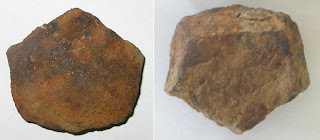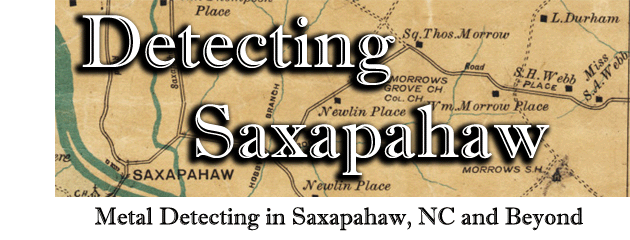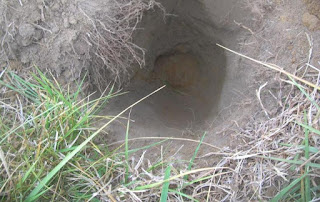The
Battle of Bentonville, North Carolina took place on March 19-21st,
1865.
It was the last great offensive
for the Confederate Army under General Joseph E. Johnston, commanding about
20,000 men.
The Union,
under General William T. Sherman, was comprised of about 60,000 men.
The results of those three days of combat
were more than 3,000 men killed or wounded, along with a decisive Union victory
that left the Confederate army fleeing and the end of the war in sight.

On the third and final day of the battle, March 21st,
General Joseph Mower requested permission to conduct “a little reconnaissance”
to his front on the Union right wing.
This quickly escalated, and he lead two brigades on a full scale attack
on the Confederate left wing, defending General Johnston’s headquarters as well
as the highly important Mill Creek bridge.
This attack, which became known as
Mower’s Charge, broke the confederate
flank and reached as far as Johnston’s
headquarters, forcing a Confederate retreat.
The charge was ended by a counterattack from Confederate General William
Hardee (whose only son was mortally wounded during the counterattack), as well as
orders from General Sherman to pull back to avoid a larger confrontation.
During the night of March 21st, the
Confederates retreated across the Mill
Creek bridge,
ending the battle. The drawing above is a depiction of Mower's Charge from the Frank Leslie Illustrated Newspaper.

With field crops now being to be harvested, I was able to get
out with my good friend Jim to do some detecting near the site of Mower’s
Charge. I had some very good luck this
trip, and broke out of my recent detecting slump in a big way. Above is a picture of all my finds from the
battle.
I recovered three bullets during the day.
The center bullet is an unfired 58 caliber three ring minie ball, the
most commonly used ammunition. To the
left is another 58 caliber bullet, heavily deformed from impact after
firing. This is an excellent example of
the power of the weapons used, and shows why they were capable of such
devastating wounds. On the right is
another type of minie ball, this one a 577 Enfield bullet. This is a much less common round, and only
the third such bullet that I have personally recovered.

After the battle, Union
Lt. Matthew Jamison of the 10
th Illinois wrote
“[We] form
line of battle in a heavily wooded country and move forward instantly, scarcely
giving time to form the line and to allow the skirmishers to deploy. Nothing joins our extreme left – skirmishers
engaged – as we advance rebel batteries shell us.” He is describing the advance of
Mower’s Charge, and the Confederate batteries (groups of typically four cannons
each) firing explosive projectiles (shells) towards their approach.
One of my finds includes this heavy piece of
iron, a fragment from a Confederate pentagonal cavity exploding shell.
The pentagonal internal cavity, filled with
gunpowder and a particular geometry used exclusively by late-war Confederate artillery,
allowed for more consistent fragmentation upon detonation and thus greater
damage to enemy troops below.
I have
discussed this type of projectile
previously, this being the second pentagonal cavity
shell fragment I have found near Mower’s charge.

My favorite find the day, though, is this rusted iron piece – a lock
plate from a rifle broken or lost during the battle.
It is most likely from an Enfield rifle,
although several other less common rifles used similar locks.
The hammer on the outside (which would strike
the percussion cap to fire the weapon) is missing, but the internal mechanism
seems to be quite intact.
Below are
pictures of an
original Enfield rifle showing how the lock plate attached to
the gun, along with a
reproduction lock plate showing the internal mechanism.
I will clean and preserve the iron by
electrolysis to prevent further corrosion, and will post new pictures of the
results when that is complete.


It is
difficult to comprehend the circumstances of that day on March 21st, 1865 when
this gun was lost. We will never know
for sure exactly why it was left there, given the incredible amount of musket
fire, artillery explosions, fierce fighting, injury and death that was going on around it. Artifacts like this always
provide such a personal connection to the war that was so brutal on both
sides. That is the reason I pursue this
great hobby of relic hunting, and share it with you here on Detecting Saxapahaw.
Last but not least, in case you thought it was too easy, here’s
an example of some of the many pounds of junk I carted away! Thanks for reading, and stay tuned for my
upcoming electrolysis update!









